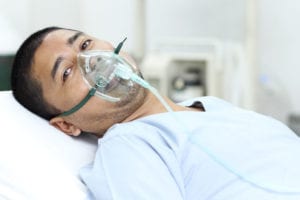LOS ANGELES, CA – Hoping this can provide critical nourishment for someone with severe dysphagia to both solids and liquids instead of defaulting to the usual NPO status, hospitalist Jared Gott has placed his patient on a gaseous diet.

“Our food services and nutrition staff have made incredible strides in making the different items on the menu not only healthy and palatable, but light and airy,” explained Executive Chef at Los Angeles Medical Center (LAMC), Rod Gurley, whose main contribution to the menu over the past six months is mastering the art of what’s called food sublimation.
For those who don’t quite remember their high school chemistry, sublimation is the chemical process by which a solid turns directly into a gas, completely bypassing the liquid stage.
“When the tray is brought to you at bedside,” explained Gurley, “and you open the lid covering the baked chicken gas, simply take a whiff. Delicious and nutritious. Dinner is served. No swallowing, no chewing, just breathing.”
Gurley is working with respiratory therapists at LAMC to make supplemental gaseous nutrition available via nasal cannula or face mask. “Unlike supplemental oxygen,” Gurley added, “this will work best if the mask or cannula isn’t on your forehead.”
Gott always worries when his patients are not utilizing their gastrointestinal (GI) tracts, particularly for periods of several days at a time or longer. Though several modalities exist to bypass oral intake on a temporary basis – namely, the use of nasogastric tubes or parenteral routes to administer nutrition – Gott likes to use the GI tract whenever he can. Even if the food gets in there after being inhaled.
“The food Gurley’s created is pretty tasty actually, granted the taste is very short-lived,” Gott admitted, saying he’s tried nearly every item on the gaseous diet. Amazingly enough, Gott and his colleagues have not encountered any issues with aspiration pneumonia or pneumonitis. “My personal favorite? The sublimated turkey sandwich is sublime. YUMMMMMMMMY.”